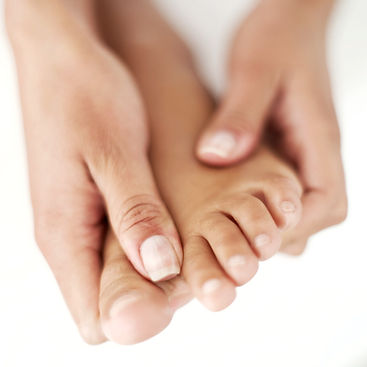Feritily Coaching
My approach involves me using my knowledge of gynecology, obstetrics, fertility and IVF support, and combining this with Chinese medicine diagnostic techniques to find imbalances. By doing this, I’m able to uncover the root of the problem. I can then formulate an individual fertility treatment plan that is adjusted at each stage of the female cycle or IVF process.
With your treatment, what matters the most to me is getting the best results for you in the shortest space of time.

Acupressure for Pregnancy and Labour
Self-acupressure
Acupressure is also a form of massage that can be used for self-administered therapy. When undertaking acupressure either on yourself or someone else, the pressure applied should be firm and direct. This is one of the key differences between acupressure and conventional massage therapies.
To administer acupressure, you can use your own hands and arms. Your fingers, thumbs, knuckles and elbows are good for this. Whilst should your hands or arms not provide you with the pressure needed, you can also use the blunt end of a pencil or a similar hard, round object.

Acupressure for Pregnancy
Often known as ‘acupuncture without needles’, acupressure is a Chinese medicine therapy which sends signals to the body to promote self-healing and wellness by applying manual pressure instead of needles to the same points used in acupuncture.
For thousands of years in Chinese medicine, acupressure has been used in pregnancy. Instead of having strong medication with potential side effects, acupressure is a natural safe and effective alternative.
It is an ideal treatment to use throughout a woman's entire pregnancy to treat common issues such as nausea and morning sickness and as a way of helping pregnant women to relax. In addition to this, it can also be used as a natural and effective way of inducing labour.
Acupressure during labour
Acupressure is an ideal way of inducing labour for post-term pregnant women or women who suffer from medical conditions which mean they need labour induction.
It can also be used to provide pain relief whilst giving birth. As it is a relaxing treatment, acupressure also assists in an efficient labour.
In recent years, western medicine has accepted and applied these Chinese medicine techniques. Acupressure's abilities to induce labour, relieve pain, assist with anxiety and strengthen contractions has now been recognised.

Practising acupressure before going into labour
If you plan on utilising acupressure whilst in labour, I recommend that you practice it regularly beforehand. It is important that you start using acupressure in the early stages of labour and continue with this to ensure it is successful as labour progresses to the later more intense stages.
From week 37 of pregnancy, you will be able to administer acupressure to all of the points on the body. It should be noted that during pregnancy, you should use less pressure than is needed when administering acupressure during labour.
When you’re in labour, you should press firmly on the point. The result of this should be a feeling which is tolerable but which has a feeling of strong pressure. You may even feel an electrical sensation or a slight heaviness.
It is important to note that acupressure differs between pregnancy and labour, so whilst a specific acupressure point or level of pressure may feel best during pregnancy, this may change during labour. This could also change depending on what phase of labour you’re in.
Acupressure Points
If undertaking acupressure for labour, there are several points where pressure can be applied for pain relief and an efficient birth:
Large Intestine 4
Large Intestine 4 is a pressure point which will assist in getting labour started. With this point, the woman is able to undertake self-acupressure. It is advised that she starts pressing this point during the last couple of weeks of pregnancy only as it’s a powerful point for induction. It is also a very useful point to assist the woman who gets the urge to push.
Urinary Bladder 60
Generally used to increase circulation of Qi and blood and to provide pain relief in the body. It is also ideal for acupressure during the transitional phase of labour.
Gall Bladder 61
Located in the centre of the shoulder muscle, acupressure is administered to this point by pinching the shoulder muscle with your thumb and middle finger, whilst applying downward pressure using your index finger. This area should be massaged and stimulated for around 4-5 seconds.
This point sends energy downwards, that's why it is a useful point to induce labour, it must never be used before the final weeks of pregnancy.
Spleen 6
Located on the inner calf about four fingers width up along the tibial bone, Spleen 6 can be identified where there is a tender spot. This acupressure point together with LI4 can be used to encourage stronger contractions in a stalling labour. Its very important to note that this point shouldn’t be used before week 38 of pregnancy as it stimulates labour induction strongly.
Kidney 1
Kidney 1 is located at the centre of the sole of the foot next to the bottom of the ball of the foot. Applying acupressure to this point will assist with the transition stage of labour by pulling energy downwards.
This point can also assist with any stress and anxiety experienced during labour.
If undertaking self-acupressure, you can also use Sea-Bands (available from most chemists) around the foot to place the pressure on the foot for you.
Lower Back Points
If you are going through back labour or you are in the middle of an intense contraction, acupressure can be of great help when applied to the lower back points.
The exact location of these may differ depending on where it feels best for the woman in labour. Sometimes, the point may be more outwards on the lower back rather than in it.
For best results, have your support person push into the points with their knuckles and lean in with their body weight during a contraction.